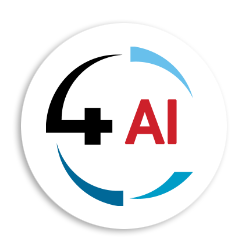Blog
Introducing GPT-4o: Generative AI for Azure: What’s the hype all about?

Ever since OpenAI launched its chatbot that took the world by storm in 2022, my anticipation for a greater and more sophisticated large language model fueled my excitement. New versions flooded our AI development conversations with partners, colleagues and especially our tech-geek friends and changed our workload landscapes and for some, made their roles easier in their workplace. Now that a new flavor, being GPT-4o has reached our test benches, interesting features are being showcased.
Microsoft has revealed the release of this latest model on Azure AI, marking a significant advancement. This innovative multimodal AI model combines text, visual, and audio functionalities, establishing a new benchmark for generative and conversational AI.
Some Background on Azure OpenAI Service OpenAI Service, particularly the Azure OpenAI Service, is a platform that provides access to advanced language models developed by OpenAI, such as GPT-4, GPT-3.5-Turbo, and Codex. These models are capable of a wide range of tasks, including natural language processing, content generation, summarization, image understanding, semantic search, and natural language to code translation.
The service is designed to be flexible and scalable, allowing developers to fine-tune the AI models to their specific needs and integrate them into various applications1. It’s available through REST APIs, Python SDK, or a web-based interface in the Azure OpenAI Studio.
Azure OpenAI Service emphasizes responsible AI usage, incorporating Microsoft’s principles for responsible AI use, building content filters to support customers, and providing guidance to onboarded customers. Access to the service is currently limited, prioritizing existing partnerships with Microsoft, lower risk use cases, and those committed to incorporating mitigations.
Responsible AI usage in Azure OpenAI Responsible AI usage in Azure OpenAI is a critical aspect that Microsoft takes seriously. The approach is structured around the Microsoft Responsible AI Standard, which includes policies that Microsoft’s engineering teams adhere to. This standard is designed to ensure that AI systems are developed and operated responsibly, with an emphasis on identifying, measuring, mitigating, and operating practices to manage potential harms.
Here's a quick view of the key stages of a Responsible AI lifecycle within Azure OpenAI:
- Identify: This involves identifying and prioritizing potential harms that could result from the AI system. Techniques like red-teaming, stress-testing, and analysis are recommended to develop a list of potential harms for specific scenarios.
- Measure: After identifying potential harms, the next step is to develop a systematic approach to measure each harm. This includes establishing clear metrics, creating measurement test sets, and conducting iterative, systematic testing.
- Mitigate: To mitigate identified harms, tools and strategies such as prompt engineering and content filters are implemented. The effectiveness of these mitigations is tested through repeated measurements.
- Operate: Finally, a deployment and operational readiness plan is defined and executed. This ensures that the AI system is operated responsibly throughout its lifecycle.
These measures help ensure that AI models are unbiased, explainable, trustworthy, and used in a responsible and compliant manner. Additionally, Azure OpenAI Service promotes responsible AI by adhering to ethical principles, providing explainability tools, governance features, diversity and inclusion support, and collaboration opportunities.
Moving ahead with generative AI technology for Azure OpenAI Service. GPT-4o introduces a transformative approach to the interaction between AI models and multimodal inputs. Through the smooth integration of text, images, and audio, it delivers an enhanced and captivating user engagement and experience. Azure OpenAI Service customers in two US regions can experiment with GPT-4o's capabilities via a preview playground in Azure OpenAI Studio. While this early version emphasizes text and visual inputs, it foreshadows future expansions into audio and video processing.
How cost effective is this new model and what use cases can we expect? Designed for rapid response and optimal performance, GPT-4o is capable of processing intricate requests while consuming fewer resources, resulting in significant cost reductions and enhanced overall efficiency.
This opens new possibilities for various business and their sectors:
- Improved Customer Support: GPT-4o enhances customer support interactions by combining various data sources, resulting in more adaptable and all-encompassing exchanges.
- Complex Data Analysis: Utilize the advanced data processing and analytical features of GPT-4.0 to improve decision-making capabilities and reveal more profound insights from various data types.
- New Content Approaches: Leverage the power of GPT-4 to develop captivating content in a variety of formats, ensuring there's something to resonate with every individual in your target audience.
You can start building your own Copilot for your customer’s solutions by engaging with your Surestep Ambassador team for more information at This email address is being protected from spambots. You need JavaScript enabled to view it. and let Microsoft’s AI technologies pave new business for your Azure practice.


